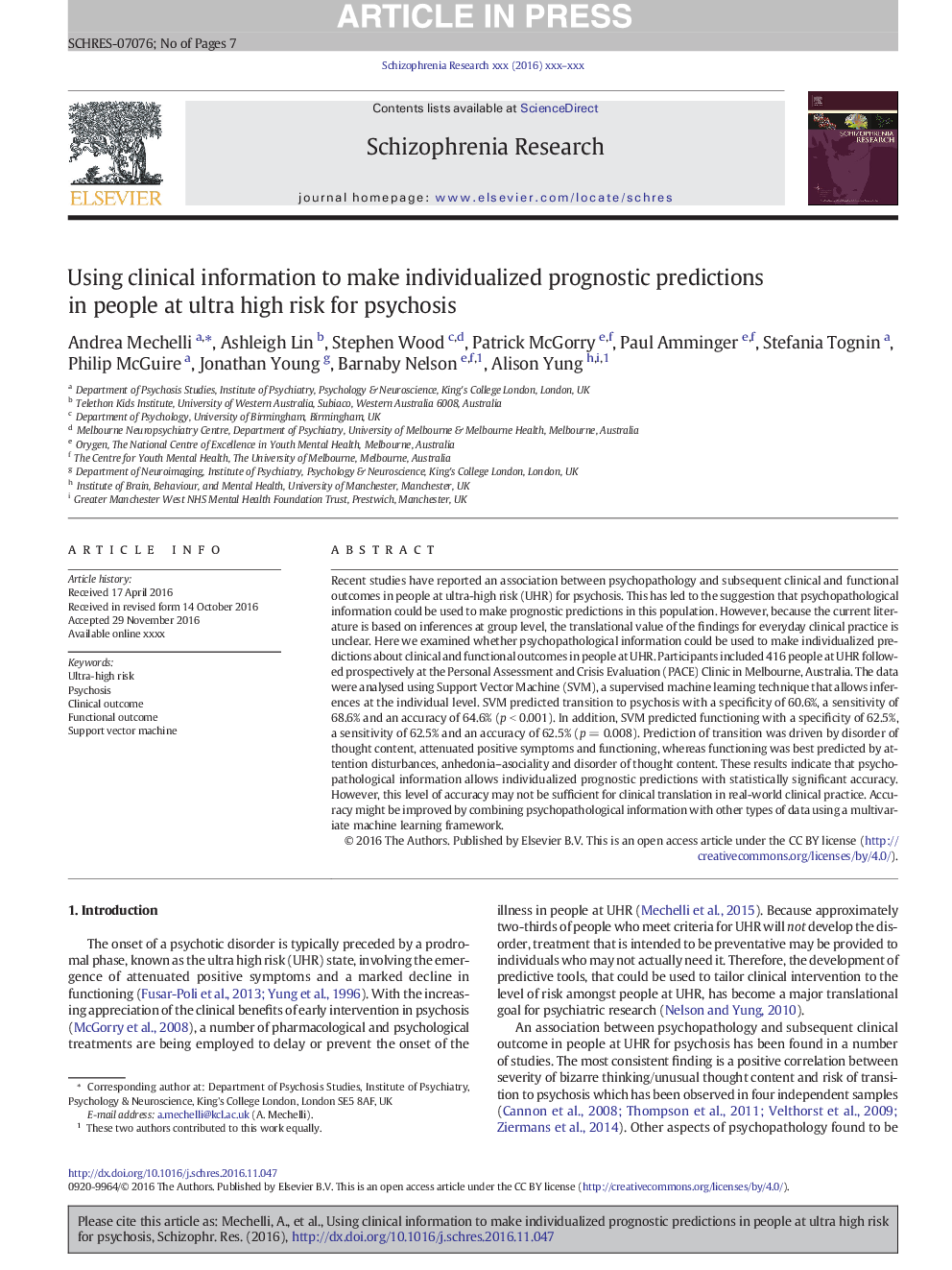ترجمه فارسی عنوان مقاله
با استفاده از اطلاعات بالینی برای پیش بینی های پیش آگهی فردی در افرادی که در معرض خطر فوق العاده برای روان درمانی هستند، استفاده می شود
عنوان انگلیسی
Using clinical information to make individualized prognostic predictions in people at ultra high risk for psychosis
| کد مقاله | سال انتشار | تعداد صفحات مقاله انگلیسی |
|---|---|---|
| 129144 | 2017 | 7 صفحه PDF |
منبع

Publisher : Elsevier - Science Direct (الزویر - ساینس دایرکت)
Journal : Schizophrenia Research, Volume 184, June 2017, Pages 32-38
ترجمه کلمات کلیدی
ریسک فوق العاده بالا، روانپریشی نتیجه بالینی، نتیجه کارکرد، ماشین بردار پشتیبانی،
کلمات کلیدی انگلیسی
Ultra-high risk; Psychosis; Clinical outcome; Functional outcome; Support vector machine;

